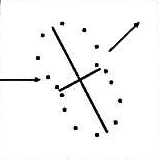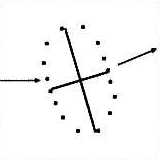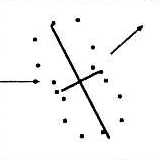 Na + N2 |
 Na + CO |
 Na + C3H8 |
 Na + CH3Cl |
International Workshop on Atomic Interactions in Laser Fields - Abstracts
J. Grosser
Institut für Atom- und Molekülphysik, Universität Hannover, Germany
The laser excitation of collision pairs in an experiment with crossed atomic beams provides numerous possibilities for the detailed study of collisions. The interference structure of the differential cross sections provides a sensitive probe of the molecular potentials with nearly spectroscopic sensitivity. Polarization experiments yield geometric images of the collision event, showing even details of the collision geometry. Polarization can be used in addition to control collisions. Trajectories can be switched on and off; or, atomic collision pairs form a microscopic interferometer, which is fully tunable. The selective excitation of molecular states together with a product state analysis provides an ideal tool to study elementary nonadiabatic processes, e. g. spin recoupling or the locking process. At present, we are concentrating the experimental effort on the study of atom-molecule collisions. The figures below show preliminary results for the geometry of different atom-molecule collision complexes. The data can be used to draw conclusions on the electronic structure of the complex. The observation of the different collision geometries of rotationally elastic and inelastic collisions is in preparation. Studies of nonadiabatic processes in atom-molecule system have been started; they will yield detailed information on the typical nonadiabatic mechanisms, e. g. conical intersections.
 Na + N2 |
 Na + CO |
 Na + C3H8 |
 Na + CH3Cl |
Figure l: Polarization dependence of the differential optical collision signal for different molecular targets. The dots show the intensity as a function of the laser polarization in polar diagrams, the bars represent the conditions of smallest and largest intensity, the arrows show the relative velocity vectors before and after the collision.